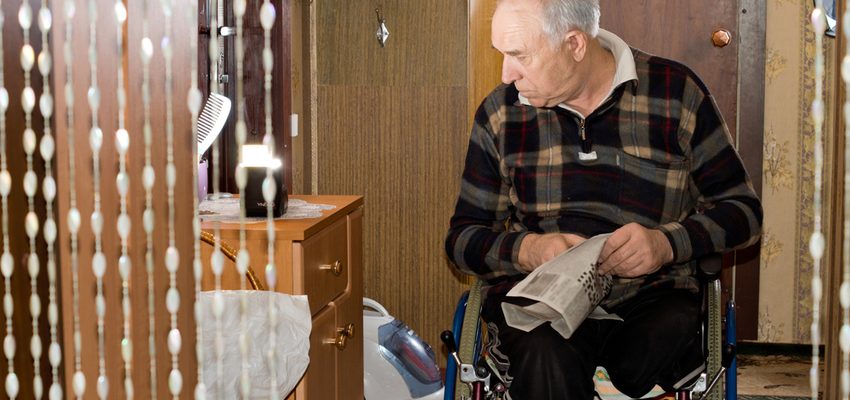Blog

The Impact Of Physical Environment On Senior Well-being In Assisted Living
May 7, 2025 0 Comment Category: Care Center
Assisted Living Facilities
As more families turn to assisted living facilities to care for aging loved ones, the focus is not just on medical care and daily support—it also includes creating a nurturing, engaging, and comfortable physical environment. Research shows that the design and atmosphere of a senior living facility directly impact residents’ mental, emotional, and physical well-being.
From natural lighting and color schemes to safety features and social spaces, the environment in which seniors live can significantly influence their health, happiness, and overall quality of life. In this article, we’ll explore the critical elements of a well-designed assisted living environment and how they promote wellness in older adults.
Why the Physical Environment Matters
A well-planned physical environment in assisted living facilities serves multiple functions:
-
Supports daily functionality by reducing barriers.
-
Enhances emotional well-being by promoting calm and familiarity.
-
Fosters social engagement through communal areas and activities.
-
Reduces risk of injury, especially from falls or confusion.
-
Encourages independence by being intuitive and accessible.
For seniors—especially those facing cognitive decline, reduced mobility, or chronic illness—these aspects can mean the difference between thriving and merely existing.
Key Elements of an Effective Physical Environment
1. Safety and Accessibility
Safety is the foundation of any senior living environment. Seniors are at increased risk of falls and injuries, so facilities must include:
-
Non-slip flooring
-
Grab bars in bathrooms and hallways
-
Ramps and elevators
-
Adequate lighting, especially at night
-
Emergency call systems in rooms and common areas
-
Wide, uncluttered hallways to accommodate walkers and wheelchairs
These features reduce the fear of falling and encourage seniors to move around more confidently and independently.
2. Lighting and Natural Elements
Natural light plays a significant role in regulating circadian rhythms, improving mood, and reducing symptoms of depression or dementia-related agitation. Assisted living environments should:
-
Maximize sunlight through windows and skylights
-
Use warm, soft indoor lighting that mimics daylight
-
Offer views of nature, gardens, or green spaces
-
Provide access to outdoor patios or walking paths
Spending time in well-lit, natural spaces has been shown to boost Vitamin D levels, improve sleep, and reduce anxiety among older adults.
3. Color, Contrast, and Signage
As eyesight diminishes with age, the right use of color and contrast becomes essential for orientation and safety.
-
Walls and floors should contrast in color to define boundaries.
-
Furniture and walls should not blend, preventing tripping.
-
Bold, readable signage helps those with cognitive impairment navigate the facility.
-
Calming colors like greens, blues, and earth tones promote relaxation, while overstimulating colors (e.g., bright reds or oranges) should be used sparingly.
Clear visual cues create a supportive environment for seniors with dementia or vision impairments.
4. Homelike Atmosphere
Creating a warm, familiar space helps residents feel more at ease and less institutionalized.
-
Decor with personal touches like photos, cozy furniture, and familiar objects
-
Private or semi-private rooms that allow personalization
-
Home-like dining areas with shared meals
-
Fireplaces, soft fabrics, and artwork contribute to a sense of belonging
This comforting atmosphere reduces anxiety, encourages positive social interaction, and helps seniors feel at home.
Social and Activity Spaces: Encouraging Engagement
Socialization is key to senior well-being, and the layout of the facility should promote connection and interaction:
-
Common rooms with comfortable seating for informal gatherings
-
Activity rooms for games, arts, and crafts
-
Exercise spaces or wellness rooms for yoga, stretching, or fitness
-
Dining rooms that encourage communal meals
-
Outdoor areas with benches, gardens, or walking paths
When seniors are engaged socially, they experience lower levels of depression and cognitive decline, and higher levels of physical activity and life satisfaction.
Private Spaces: Respecting Dignity and Independence
While social interaction is important, seniors also need private, personal space to relax, recharge, and maintain autonomy.
-
Bedrooms should be quiet, comfortable, and customizable
-
Lockable doors and personal storage help protect privacy
-
Bathrooms must be easily accessible, with privacy and safety features
-
Residents should have control over lighting, room temperature, and personal items
Maintaining this balance between social and private space empowers seniors to feel more in control of their lives.
Noise Reduction and Sensory Comfort
Noise pollution and overwhelming sensory input can be distressing for seniors, particularly those with cognitive impairments.
-
Acoustic panels or carpets can reduce echo and loud noises
-
Quiet areas or reading nooks offer a peaceful retreat
-
Proper ventilation and temperature control prevent discomfort
-
Avoiding strong chemical smells and harsh lighting supports sensory health
These features help reduce confusion, agitation, and stress, creating a calm and manageable environment.
Innovations in Senior Living Design
Modern assisted living facilities are incorporating innovative design trends that further enhance well-being:
-
Green buildings that use environmentally sustainable materials and natural ventilation
-
Memory care units with circular layouts to prevent wandering confusion
-
Technology integration, including smart lighting, fall-detection systems, and virtual communication tools
-
Pet-friendly areas to encourage emotional bonding and stress reduction
These advancements not only support safety and comfort but also foster a sense of community, purpose, and innovation.
Conclusion: Designing for Dignity and Wellness
The physical environment in an assisted living facility is far more than just aesthetics—it is a core component of holistic senior care. A well-designed space can foster independence, prevent injuries, ease anxiety, and promote joy.
For families exploring assisted living options, it’s crucial to tour facilities with a keen eye for these environmental features. Ask yourself: Is the space welcoming? Is it safe and accessible? Are there opportunities for meaningful engagement?
When the physical setting supports both the body and the spirit, it lays the foundation for seniors to live comfortably, confidently, and with dignity in their later years.

leave A comment